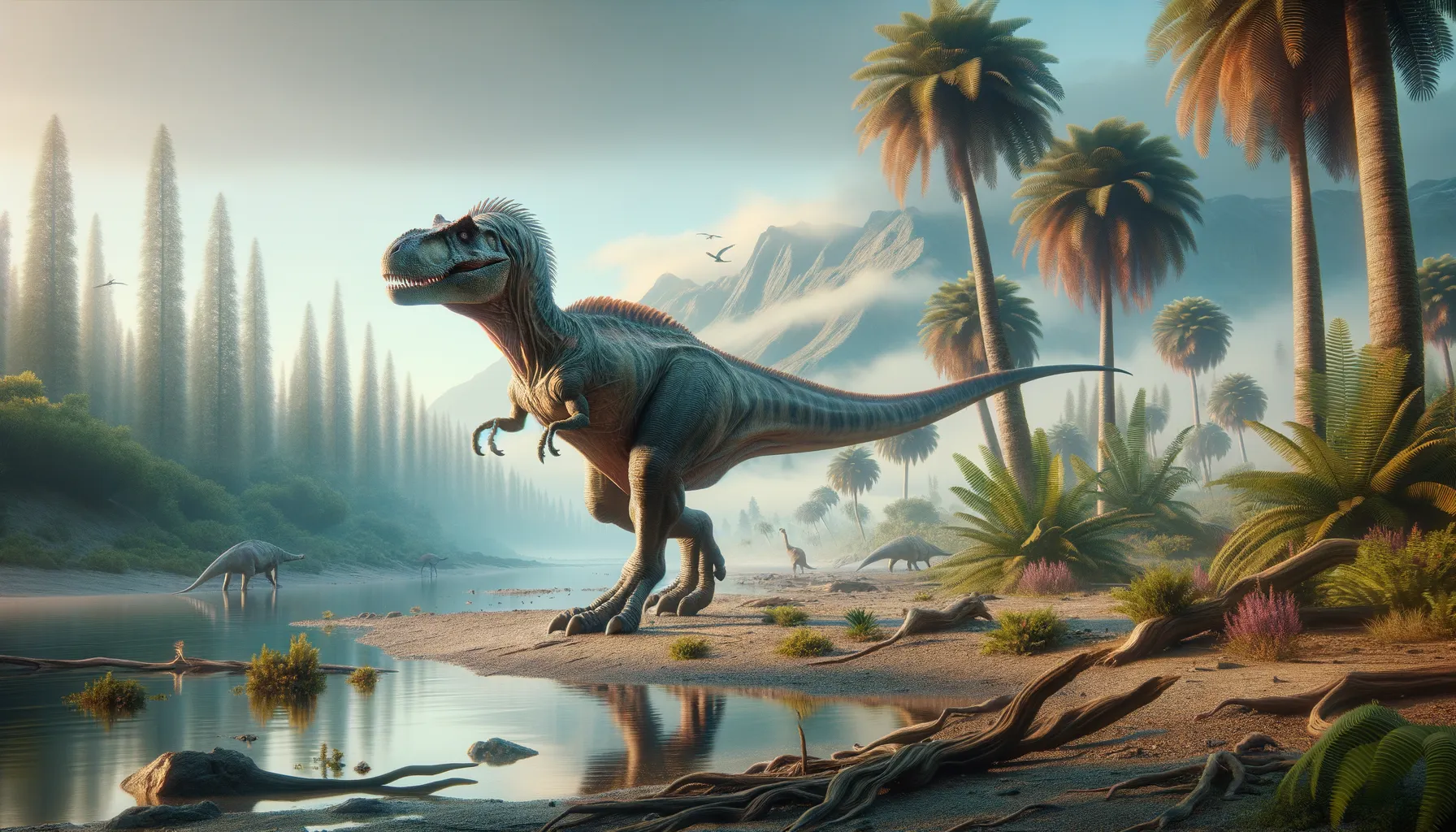
Hironosaurus
Ancient predator of land and water.
Period
Cretaceous
Length
Could grow up to 10 meters in length.
Height
Around 3 meters tall at the shoulder.
Weight
Approximately 2 tons as an adult.
Hironosaurus was a fascinating dinosaur from the Cretaceous period that roamed the ancient landscapes now known as the Sahara Desert. These creatures were notable for their moderate size and semi-aquatic lifestyle. They adapted well to both land and water, featuring strong limbs to navigate diverse terrains. A major highlight of their existence was their unique hunting strategy, which allowed them to efficiently catch prey along water banks.
Diet
Hironosaurus had a carnivorous diet, primarily feeding on fish and small vertebrates. Its diet varied depending on the availability of prey, adapting to both aquatic and terrestrial hunting grounds.
Hunting
As a semi-aquatic predator, Hironosaurus relied on stealth and patience. It often ambushed fish in shallow waters and could also stalk small terrestrial animals when the opportunity arose.
Environmental challenges
Living in a semi-aquatic environment posed challenges such as fluctuating water levels and varying prey availability. The harsh climate of the Cretaceous period demanded resilience and adaptability. Competition with other predators made food scarcity a constant threat, requiring strategic hunting approaches.
Speed
Moderate, capable of short bursts.
Lifespan
Estimated around 20 to 30 years.
First discovery
Uncovered during an expedition in the Sahara Desert.
Fun Facts
- Hironosaurus was discovered in a remote part of Africa, adding a new chapter to the region's prehistoric history.
- This dinosaur gets its name from the local folklore hero, reflecting the area's rich cultural heritage.
- Hironosaurus was a herbivore, munching on the lush vegetation that flourished during the Cretaceous period.
- The fossils of Hironosaurus show unique features in its teeth, adapted to its plant-based diet.
- Paleontologists believe Hironosaurus could have been a peaceful, gregarious creature, living in herds for protection and social interaction.
- Local communities celebrate the discovery of Hironosaurus with an annual festival, attracting dinosaur enthusiasts from around the world.
- Hironosaurus's discovery has sparked increased interest in paleontology among students in Africa, inspiring a new generation of scientists.
Growth and Development
Hironosaurus experienced rapid growth in its early years, reaching nearly full size by age ten. Its development was marked by thickening of bones and muscle strength to support its aquatic lifestyle. Juveniles needed to adapt quickly to a dual environment for survival.
Habitat
Hironosaurus inhabited the riverbanks and lagoons of the ancient Sahara, where water sources were abundant. Its habitat was a mix of lush vegetation near waterways and arid open spaces. Seasonally, these dinosaurs might migrate short distances for better resources.
Interaction with other species
It coexisted with other dinosaurs and early mammals, often competing for resources. Some species avoided areas frequented by Hironosaurus to evade aggression. However, certain smaller creatures adapted to living near its territory due to mutual avoidance.
Natural lifespan
Typically lived around 25 years in the wild.
Reproduction
Breeding took place near water sources, where females laid eggs in secure nests. Parental care was minimal, though hatchlings were instinctively drawn to water for safety. Clutch sizes varied but typically consisted of 6-8 eggs.
Social behaviour
Hironosaurus were generally solitary but occasionally formed loose groups for feeding in fertile areas. Social hierarchy was evident during mating seasons when males displayed dominance. Communication was limited, relying on visual cues.
Fossil locations
Significant fossil discoveries have been made in northern Africa, particularly in Morocco and Algeria. These regions provided rich insight into the Cretaceous ecosystem. The excavation sites have yielded well-preserved skeletons and partial remains, adding to their historical understanding.
